Abschnitt 2 - 2 Definitions
The terms below are defined as follows for the purpose of the present DGUV Rule:
2.1
Vessels and confined spaces are areas constrained completely or predominantly by rigid walls and in which, owing
to their physical confines, inadequate air replacement rates, or the substances, mixtures,
contaminants or equipment found within them or introduced into them, particular hazards
exist or may arise that substantially exceed the normal prevailing hazard potential
of workplaces. Areas only partly surrounded by rigid walls in which however, owing
to the design of the areas or to the site conditions, hazardous substances may accumulate
or an oxygen deficit may arise, also constitute confined spaces in the sense of this
DGUV Rule.
Where the incidence of particular hazards (see below) cannot reliably be ruled out, areas such as the following must also be regarded as confined spaces:
Tank pits
Pits in general
Shafts
Sewers
Ships’ holds
Weighbridge pits
Cavities in building structures and machines
Box girders of bridges and cranes
Hubs, rotor blades and spinners of wind power installations
Particular hazards caused by substances or mixtures may exist or arise in confined spaces and vessels as a result of:
Work methods such as welding, grinding, cleaning with liquid or solid substances
Surface treatment work
Agitation of residues
Biological processes, such as fermentation, putrefaction
Chemical reactions
Gases used for purging
Substances and mixtures entering through leaky lining or valves
Oxygen deficit; this may be caused by inert gases used for purging, or by substances (including the material from which the vessel is manufactured) that absorb the oxygen, bind it chemically or physically or displace it (see also Annex 5); the consumption of oxygen or unsuitable and inadequate ventilation during work in vessels, silos or confined spaces may also lead to an oxygen deficit.
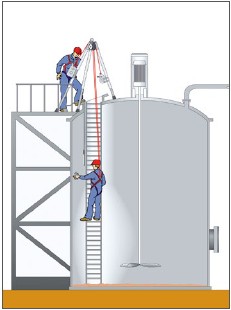
Fig. 1
Maintenance work
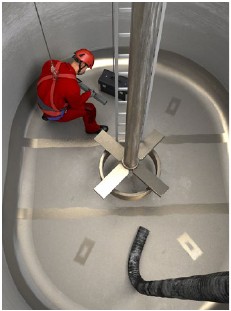
Fig. 2
Repair work
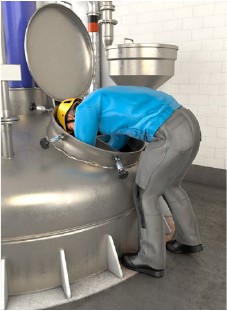
Fig. 3
Inspection tasks (leaning into the vessel or confined space): permissible only with
additional protective measures. In this case: a protective mesh in the manhole that
prevents persons from falling into it
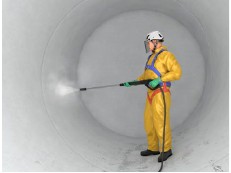
Fig. 4
Cleaning tasks
Enrichment with oxygen, for example owing to operator error or leaks arising during welding work
Hot substances or mixtures, bulk materials, liquids or other fluid substances and mixtures present in or entering vessels or confined spaces
Removal of caked deposits
Gases, vapours, mists or dusts which may arise as a result of fire or explosion
Equipment present in vessels, silos and confined spaces may for example present or give rise to particular hazards such as:
Moving parts or installed equipment such as mixing, crushing, decompaction, conveying or ventilation equipment
Heated or cooled parts of vessels and installed equipment
Closing or opening fittings in pipes, e.g. gate or butterfly valves, explosion decoupling equipment
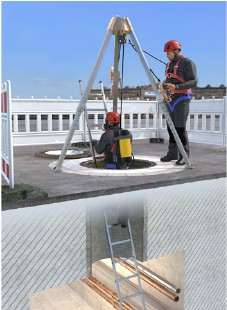
Fig. 5
Sewer

Fig. 6
Pit
Electrical equipment that is live under operational conditions, such as resistance and HF heaters
Electrical equipment such as hand lamps, electric tools, electric welding equipment
Radiation, caused for example by instruments
Cleaning equipment, e.g. high-pressure cleaners
Particular risks of mental stress may be presented for example by:
Confined spaces
Working at a height, e.g. in silos or shafts
Limited visibility, poor communication with the outside world/with the safety person
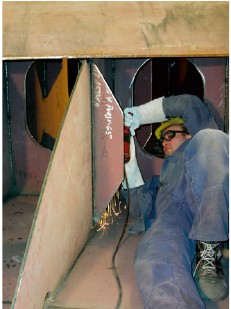
Fig. 7
Vessel during production
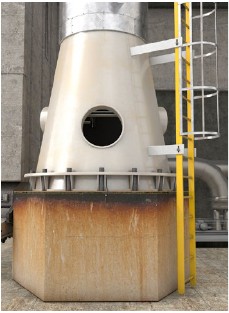
Fig. 8
Shell ring below a column
Particular hazards may also be presented for example by:
Fixed installations such as baffle plates, column bases, raised floors
Difficulty of access and rescue owing to the space constraints
Auxiliary equipment such as ladders or scaffolds
 | The classification of a location as a "confined space" should not be based solely upon its dimensions, but should also always take account of the particular hazards presented by it. In normal use, broom cupboards or bank vaults for example do not constitute confined spaces in the sense of this DGUV Rule. |
|---|
2.2
Silos are building structures for the storage of bulk materials. They are filled from the
top and emptied from the bottom or side.
The term bunker is commonly used in some areas of industry. For particular hazards, refer to the definition of "Vessels and confined spaces".
2.3
Work in this context covers tasks performed by persons in vessels, silos and confined
spaces.
Such work includes:
Maintenance work, such as:
Repair or replacement
Servicing, rust-proofing, lubrication or adjustment
Inspection work
Cleaning work, including the removal of residues
Modification work
Tasks performed during manufacturing processes
Fault clearance
Fireproofing
Access includes:
Non-assisted access
Assisted access
Leaning in
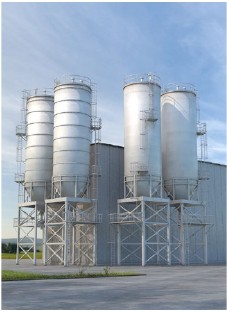
Fig. 9
Silo
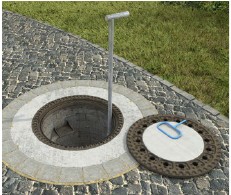
Fig. 10
Sewer access opening
2.4
Access techniques are work methods that permit access to the vessel, silo or confined space (generally
with the assistance of work equipment). Examples of such methods are:
Access simply by climbing in, without the use of equipment (this is generally the case with access points located at the bottom)
Access by means of ladders (permanently installed or mobile ladders)
Access by means of suspended access equipment in accordance with DGUV Rule 101-005
Access by means of a full body harness serving as a lifting and holding device, together with a winch for the transport of persons
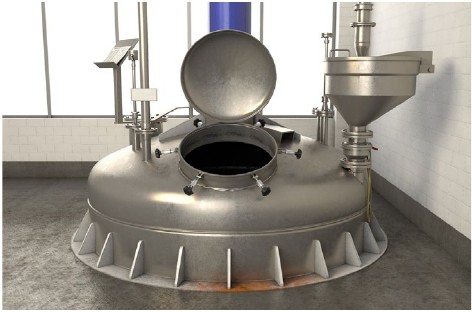
Fig. 11
Manhole
2.5
Work positioning techniques in the sense of this DGUV Rule are work methods in which persons are positioned at a certain point in the vessel, silo or confined space in order to perform work in the sense of No 3. The persons remain in the access equipment for the duration of this work. For the purpose of work positioning, suspended access equipment forming the scope of DGUV Rule 101-005 or rope access and work positioning techniques in accordance with TRBS 2121 Teil 3 and DGUV Informative publication 212-001 governing work performed with the use of such techniques can be used.
2.6
Access openings to vessels and confined spaces include but are not limited to:
Doors
Hatches
Manholes
Ladders
Manhole steps
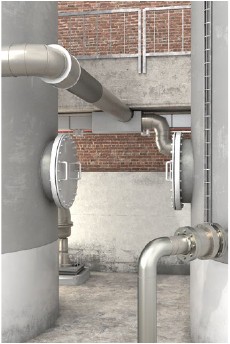
Fig. 12
Manhole (unfavourable position, conditions unfavourable to rescue)
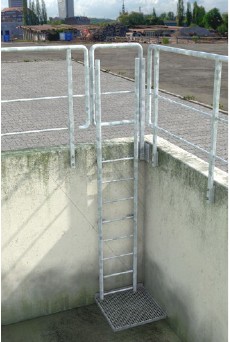
Fig. 13
Permanent ladder
2.7
Clearance measurement in the sense used in this rule is the measurement of a possible concentration of
a hazardous substance or of the oxygen concentration in order to determine whether
the atmosphere in the vessel, silo or confined space can be cleared for safe working.
Clearance measurement is not synonymous with measurement in the sense of the German Ordinance on hazardous substances or TRGS 402, "Identification and assessment of the risks from activities involving hazardous substances: inhalation exposure".
2.8
Continual monitoring of the concentrations of oxygen or hazardous substances during work has the purpose
of determining that the atmosphere in the vessel, silo or confined space continues
to permit safe working after the clearance measurement has been performed.
2.9
The chief supervisor is a person tasked by the employer with supervising the preparations for and performance
of work in vessels, silos and confined spaces.
Refer to Section 8 (1) of DGUV Regulation 1, "Principles of prevention".
2.10
The safety person is a person who maintains continual contact with the persons working in the vessel,
silo or confined space and who takes or initiates rescue measures if necessary.
2.11
An oxygen deficit is defined in this context as a state in which the oxygen concentration is lower
than that of the natural breathing air, i.e. < 20.9%.
2.12
Excess oxygen is defined in this context as a state in which the oxygen concentration is greater
than that of the natural breathing air, i.e. > 20.9%.
